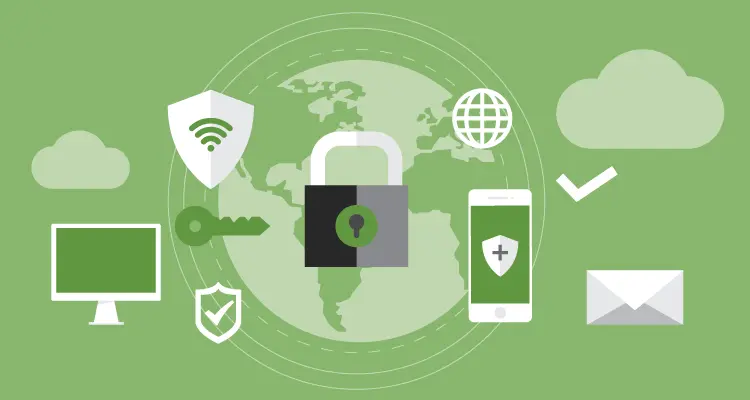We live in an age where communication technology is changing so fast that adapting to it can be challenging. The moment we start understanding a technology and become better at regulating it, another one emerges.
While digital communication offers plenty of advantages, it also comes with some notable inconveniences.
According to Statista, over 422 million people were affected in 2022 by data compromises.
Here are some common risks of digital communication and how to protect yourself against them.
1. Unauthorized access

One of the most significant risks you need to be aware of when communicating data online is the risk of having your data accessed by the wrong persons. Digital communication, if not properly sealed against potential attackers, can fall into the wrong hands, leading to all sorts of unwanted situations. For instance, unauthorized access can lead to privacy breaches, identity theft, or financial loss.
In phishing scams, for example, individuals may pretend to represent well-known institutions to convince others to communicate sensitive information. You can protect yourself against unauthorized access by properly securing any sensitive information. It’s best practice to use strong, unique passwords, and to avoid sharing them with anyone. If you need to share your computer, create multiple accounts on it and store your data in one that is password-protected.
In addition, be aware of the risks that come with data portability. While USB drives offer convenience, they also come with the risk of data theft. You can avoid losing data by securely storing, handling, and disposing of any external drive.
2. Information is sent to the wrong recipients
Examples of people or companies who sent valuable data to incorrect recipients, either through wrong phone numbers or email addresses, are not uncommon. There’s also the obvious risk of individuals intentionally forwarding, altering, or sharing digital communications with those who shouldn’t access them.
Sometimes, these unauthorized recipients will use the content for illegal activities, such as submitting fraudulent claims or soliciting personal information for malicious purposes. As such, it’s best to always double-check a recipient’s email address before sending any sensitive information.
Phishing scams prey on unsuspecting individuals. Always scrutinize unsolicited emails or unexpected phone calls and do not engage with dubious links or requests. If you have the phone number of a suspicious contact, use a reverse phone lookup service PhoneHistory.
3. Backup copies end up in the wrong hands

It’s important to note that even deleted digital communications aren’t necessarily gone forever. For instance, if backup copies have been made, apparently deleted data can end up in the wrong hands, potentially leading to data breaches or identity theft.
4. Personal information is obtained legally but used against your best interests
In some scenarios, one’s own digital communications might be accessed by entities that are not breaching any law. Companies can legally obtain digital information that they use for commercial purposes. For example, tech giants such as Google can make use of personal information for advertisement purposes.
Reading privacy policies and opting out of information sharing, when possible, can reduce the risk of having your data used inappropriately. For example, some websites offer users the possibility to only accept some “cookies”, meaning you can opt out of having your information used for advertisement. While receiving personalized ads is not necessarily a bad thing, it should be up to you to determine whether you want companies to know your interests or not.
5. Lack of social cues leads to misunderstandings

Improper communication due to a lack of understanding of the nuances of digital communication is not a risk to be ignored, as it can compromise professional or even personal relationships. Communication on digital platforms can sometimes lead to misinterpretations of tone and intent, and, consequently, to miscommunication. This happens because of the lack of non-verbal cues, such as body language or voice inflection.
Moreover, in some cases, individuals may communicate more harshly in the digital space than they would in person. This might happen because the prospect of immediate responses can lead to hurried, careless messages. The nature of digital communication can also create a false sense of security, perhaps making people more likely to behave rudely, at least to people they don’t know personally.
In this day and age, online conferences can be set up in a manner of minutes provided all the participants have the right equipment. If you’re looking to establish a new contact in a business context, for example, it’s often best to engage in face-to-face conversations rather than pitching an idea through an email.
If, on the other hand, you have just met someone in the digital space you might be interested in on a personal level, keep in mind that some people lie about their identities and intentions, and be extra vigilant until you get to know the person in a safe environment. For example, it’s best not to meet someone in a physical space before having a video conversation with that person.
Bottom line: Data protection is not rocket science
While the digital age offers unprecedented advantages in communication, it also comes with significant challenges. Balancing the convenience of digital communication with the perks of in-person interaction, and ensuring robust digital security, are key to getting the best of both worlds.
Perhaps the biggest challenge is protecting yourself against corporations that legally use your data for commercial purposes, and not always to your advantage. If you don’t want companies to understand your hobbies and purchasing intentions, think twice before accepting all cookies.
You do not need to be a cyber-security expert to protect yourself and your data in the digital space. No matter how good cyberattack schemes have become, most of them follow predictable patterns and can be avoided with a bit of cyber-education.
Use antivirus software, double-check any new contact, and don’t be overly trusting with strangers. Additionally, ensure that websites you visit have an SSL certificate, indicated by the ‘https’ in the URL, which encrypts data transmitted between your device and the site. This encryption adds an extra layer of security, especially when sharing personal or financial information online.”
Finally, don’t forget that the digital space is evolving and so should you. Always keep an eye on emerging digital threats and never assume you have become immune to them.
